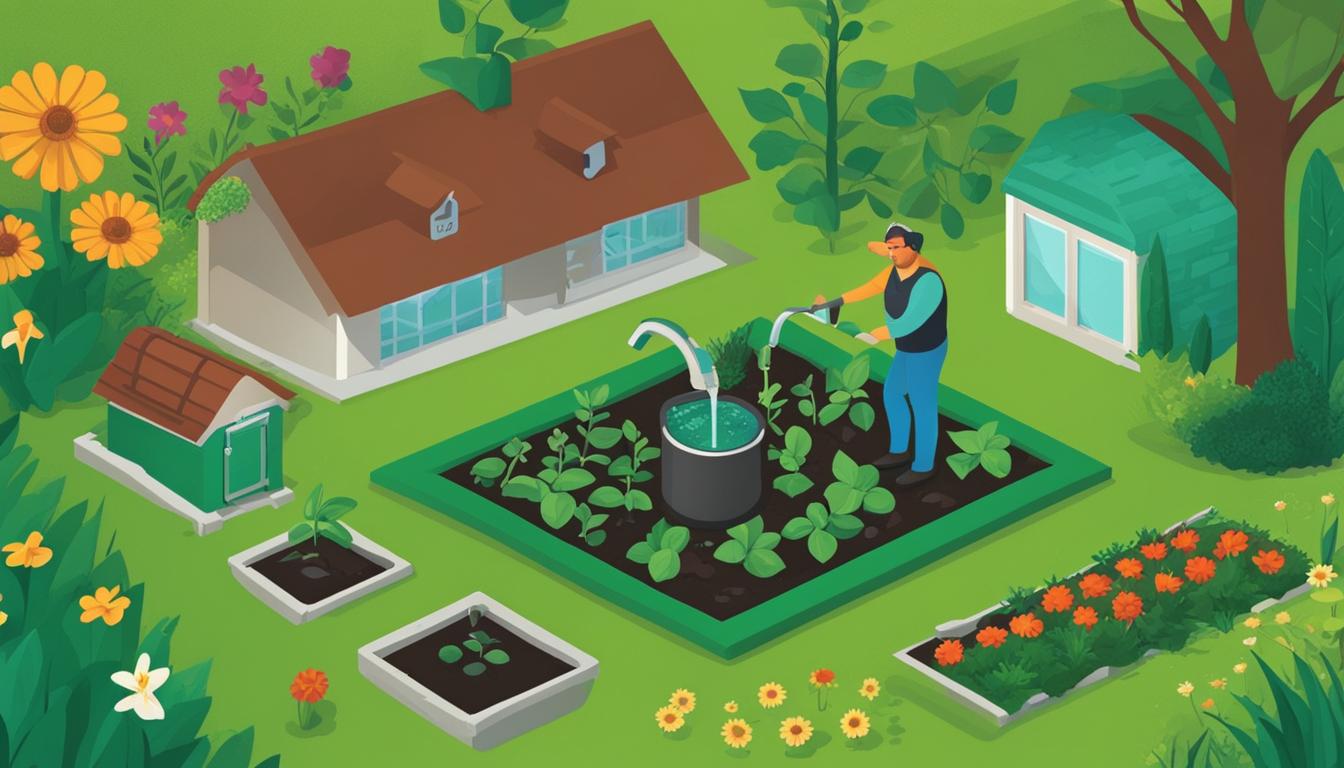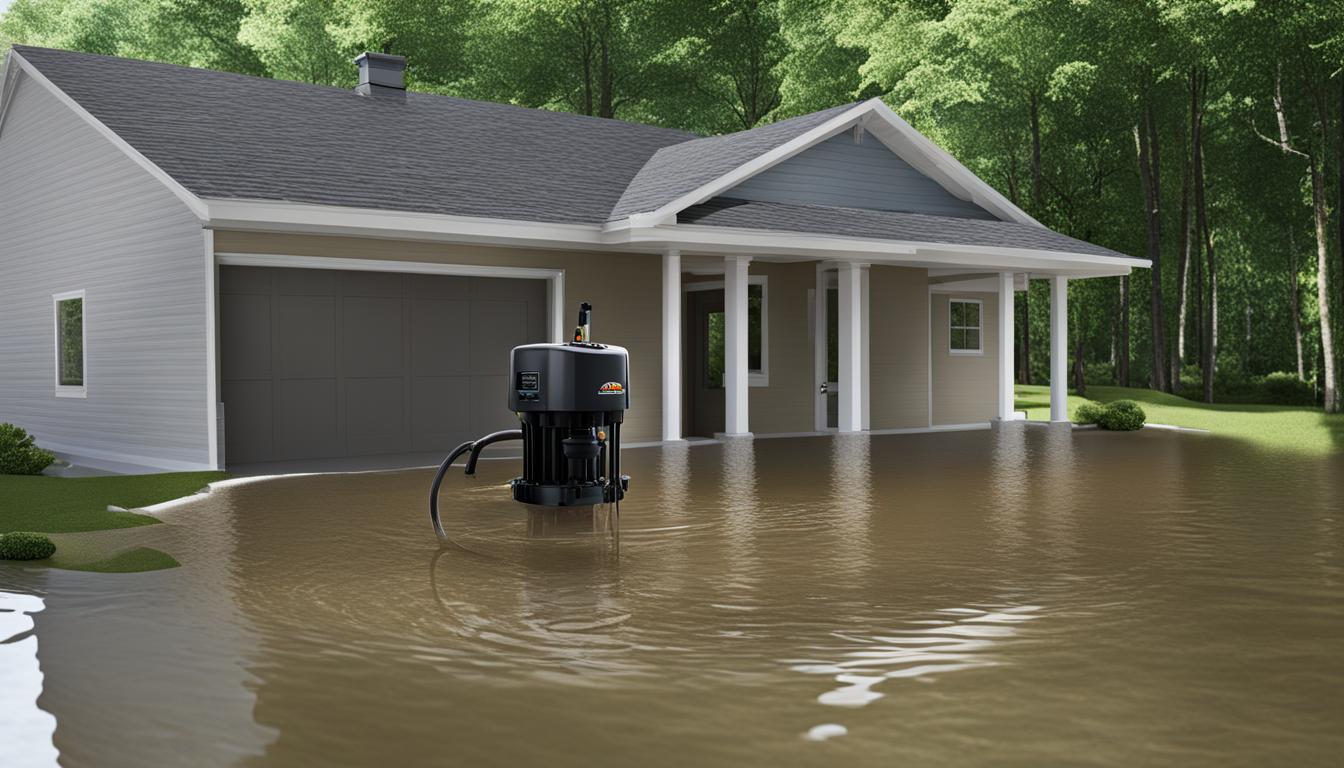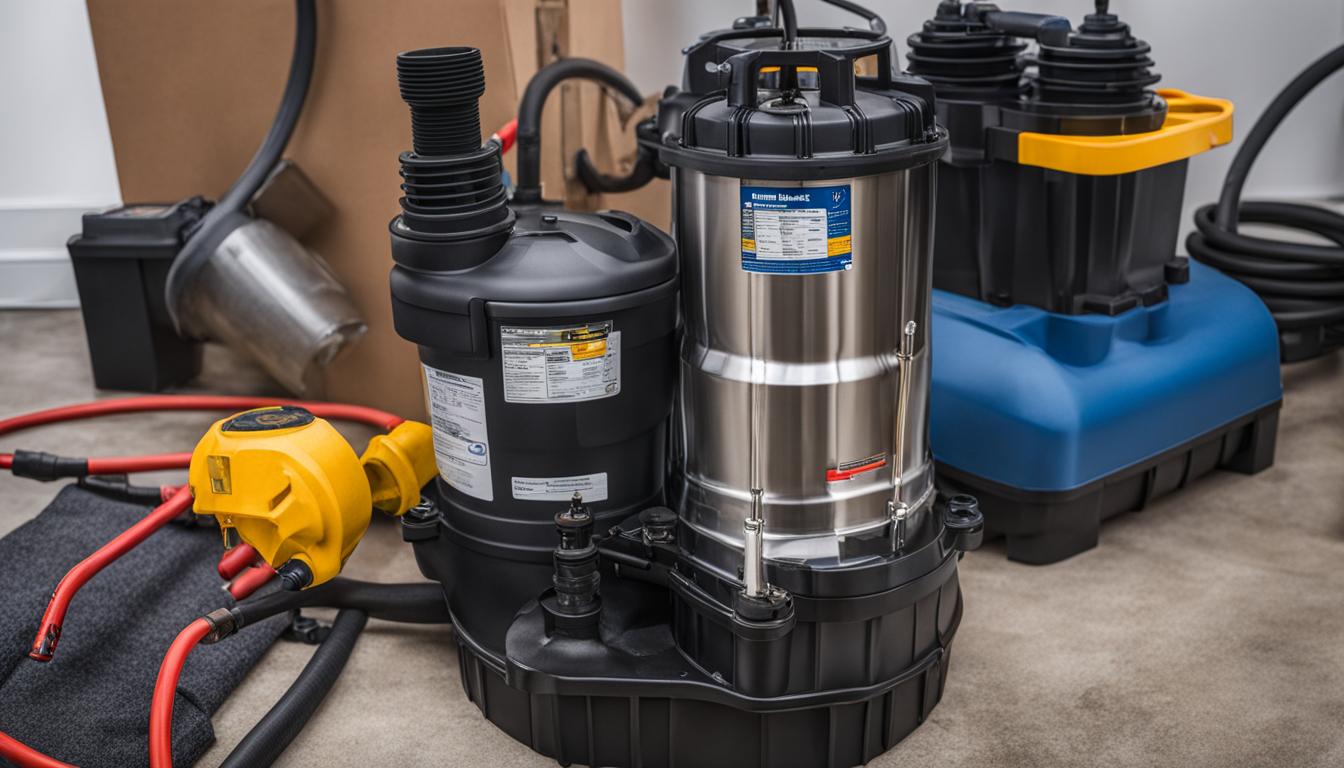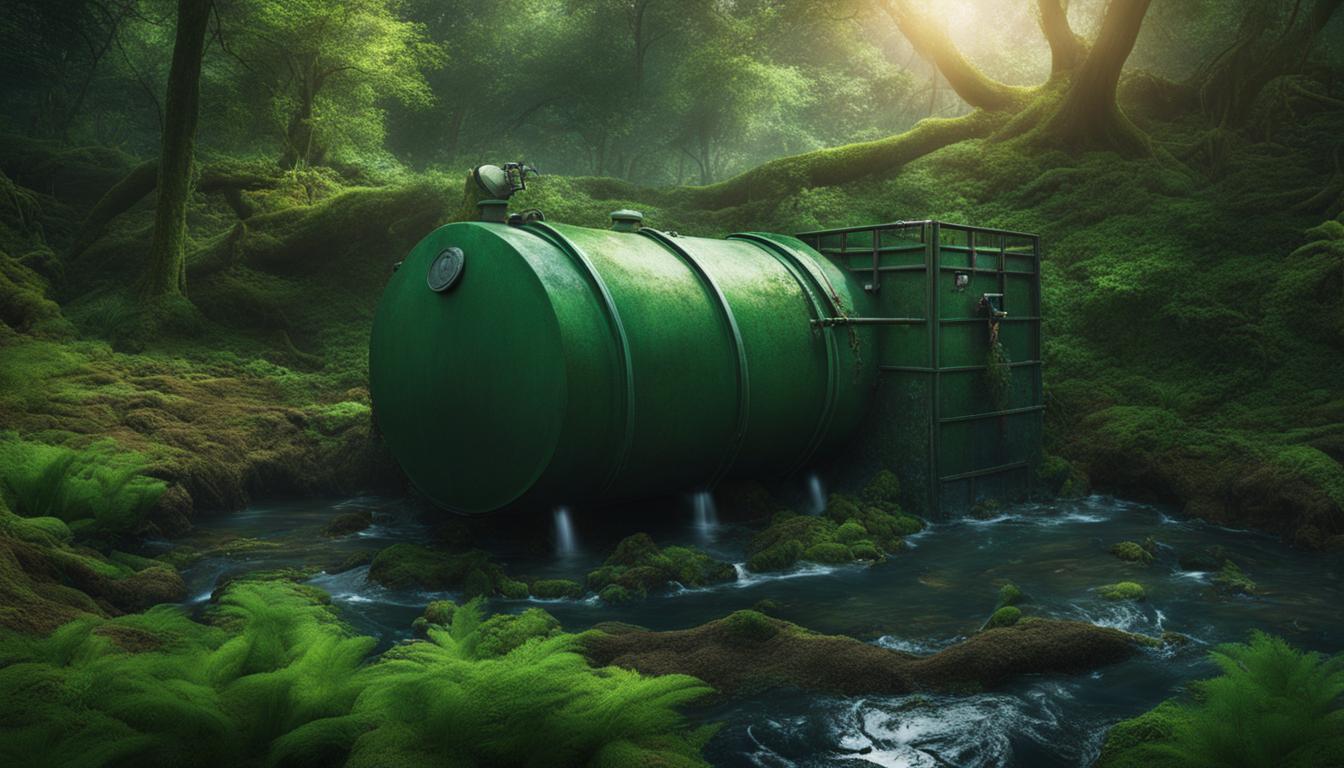As homeowners, it’s important to ensure that our septic systems are well-maintained, not just for our own comfort but also for the environment’s sake. Using eco-friendly septic treatments is an ideal way to take care of our septic systems while also contributing to sustainable septic tank care.
In this section, we will introduce you to the top 5 Eco-Friendly DIY Septic Tank Treatment Methods that can help you maintain the health and longevity of your septic system. These methods are not only effective and affordable but also environmentally conscious.
Key Takeaways:
- Using eco-friendly septic treatments is crucial for sustainable septic tank care.
- We will introduce you to the top 5 most effective Eco-Friendly DIY Septic Tank Treatment Methods.
- These methods are not only effective and affordable, but they also help to preserve the environment.
Understanding the Importance of Eco-Friendly Septic Treatments
At our core, we believe in preserving the environment and promoting sustainable living. That’s why we recommend implementing eco-friendly septic treatments for your system’s care. Not only do they promote environmentally-conscious solutions, but they also contribute to the longevity and effectiveness of your septic system. To help you understand the importance of these methods, we have compiled a list of top-rated eco-friendly septic treatments that offer effective and sustainable solutions.
Why Choose Eco-Friendly Septic Treatments?
Septic systems are responsible for treating household wastewater. Traditional septic treatments use various chemicals that are harmful to the environment, but eco-friendly alternatives use natural and sustainable products. Using green septic treatments not only ensures that your septic system is functioning properly, but it also ensures that your household waste does not contribute to environmental pollution.
Green septic care strategies are essential for environmental sustainability. By adopting these methods, you can rest assured that your septic system is contributing to a more eco-conscious approach to living. To help you understand these methods better, let’s explore the top-rated eco-friendly septic treatments in detail:
Method 1: Natural Bacteria and Enzyme Additives
When it comes to eco-friendly septic treatments, natural bacteria and enzyme additives are top-rated. These products are designed to break down waste in the septic tank, promoting a healthy balance of bacteria for efficient and sustainable septic tank care.
By introducing these additives, you can avoid harmful synthetic chemicals that can disrupt the septic system’s delicate ecosystem. The best green septic treatments use natural, non-toxic ingredients for proven sustainable septic tank care, reducing environmental pollution in the process.
How Do Natural Bacteria and Enzyme Additives Work?
Natural bacteria and enzyme additives contain live microorganisms that break down organic matter in the septic tank. These microorganisms create enzymes that can effectively digest waste, turning it into harmless by-products like water and carbon dioxide.
The enzymes produced by these additives are similar to the ones present in the human digestive system, ensuring that the waste is broken down effectively. By using natural bacteria and enzyme additives for your septic system, you can maintain a healthy balance of microorganisms, preventing the accumulation of sludge and reducing the need for frequent pumping.
The Best Products for Natural Bacteria and Enzyme Additives
| Product Name | Description |
|---|---|
| RID-X | An affordable and effective natural bacteria and enzyme additive that can break down waste, eliminate odors, and prevent clogs. |
| GreenPig Solutions | A powerful natural bacteria and enzyme additive that can reduce the frequency of pumping and prevent backups, making it an excellent choice for large households. |
| SepticMaxx | A natural blend of bacteria and enzymes that can rejuvenate and restore septic systems, ensuring long-term sustainability and reducing maintenance costs. |
Using natural bacteria and enzyme additives is an excellent choice for green septic treatments. By choosing the best green septic treatments, you can ensure a sustainable and eco-friendly septic system that supports both your household’s needs and the environment’s well-being.
Method 2: Regular Pumping and Inspections
Green septic system care strategies such as regular pumping and inspections are essential for maintaining a healthy and sustainable septic system. These tasks help prevent the buildup of solid waste and ensure that your system is functioning correctly.
Typically, septic tanks should be pumped every three to five years, depending on the household size and the level of water usage. However, it is best to consult with a professional to determine the ideal pumping frequency for your specific septic system.
When scheduling a septic tank pump-out, it is crucial to choose a licensed and certified professional who follows eco-friendly practices. A reputable service provider will ensure that the waste is disposed of appropriately and that no harm is caused to the environment.
During the pumping process, it is also an excellent opportunity to conduct an inspection of the septic system. An inspection can help identify any potential issues before they escalate into larger and more costly problems.
LSI (long-tail semantic indexing) for top-rated green septic care suggests that an inspection should include checking the septic system’s components, such as the tank, pump, and drainfield. A professional should assess the condition of the tank for any signs of cracks or leaks, inspect the pump’s operation, and evaluate the drainfield’s soil absorption rate.
Tip: Consider scheduling inspections during the springtime or early fall when the ground is neither too hard nor too saturated. Avoid conducting inspections during a rainy season or when the ground is frozen.
Method 3: Water Conservation Practices
Water conservation is a crucial factor in maintaining a healthy septic system and reducing strain on the environment. By implementing a few simple practices, you can ensure that your septic system remains sustainable in the long term. Here are some of the best practices for conserving water:
- Fixing any leaks in plumbing fixtures, including faucets, toilets, and pipes.
- Installing low-flow showerheads and faucets to minimize water usage.
- Using a high-efficiency washing machine and dishwasher, which can reduce water usage by up to 50%.
- Avoiding running water while brushing teeth or washing hands.
By reducing the amount of water that enters your septic system, you can minimize the risk of system overload and failure. Conserving water also has a positive impact on the environment by reducing the amount of water that is wasted unnecessarily.
Neural Matching for Best Eco-Conscious Septic Solutions
Using water-efficient appliances and fixtures can be an excellent way to reduce water consumption. When choosing these products, look for those that are labeled as eco-friendly or WaterSense certified. These products are designed to minimize water usage without sacrificing performance, making them an ideal choice for eco-conscious individuals.
“The average American household uses around 300 gallons of water per day. By implementing water conservation practices, we can significantly decrease that number and protect our septic systems and the environment.”
In addition to the practices listed above, there are many other ways to conserve water in your household. Consider using a rain barrel to collect rainwater for gardening or using a broom instead of a hose to clean outdoor areas. By adopting water conservation practices, you can ensure that your septic system remains healthy while also reducing your ecological footprint.
Semantically Relevant Septic Treatments
Water conservation practices are just one part of maintaining a sustainable septic system. To ensure that your septic system remains healthy, you should also consider other eco-friendly treatments, such as using natural bacteria and enzyme additives, keeping the drainfield healthy, and practicing proper waste disposal. By adopting these practices, you can minimize the risk of septic system issues while protecting the environment.
Method 4: Proper Waste Disposal
Effective and eco-friendly septic tank care is not only about maintaining the system but also ensuring proper waste disposal. Improper waste disposal can cause significant issues for the septic system and even lead to environmental pollution. To ensure sustainability, it’s vital to follow the appropriate guidelines for eco-friendly waste disposal methods.
Household Chemicals and Pharmaceuticals Disposal
Household chemicals and pharmaceuticals should not be disposed of in the septic system as they can be harmful to the environment and human health. These items should be safely disposed of by following the guidelines set by the local authorities. Many communities have designated drop-off locations for hazardous waste, such as chemicals and pharmaceuticals, that should be utilized for proper disposal.
Bathroom Products Disposal
Flushing bathroom products, such as wipes and feminine hygiene products, can cause clogs and system backups. These products should instead be disposed of in a trash can. It’s essential to use septic-safe toilet paper that dissolves quickly and breaks down effectively in the septic system.
Kitchen Waste Disposal
While it may be tempting to dispose of food waste down the drain, it can cause significant problems for the septic system. Grease, oil, and fat should never be poured down the drain as they can solidify and cause blockages. Instead, food waste should be composted or disposed of in a trash can.
Conclusion
Proper waste disposal is a crucial aspect of eco-friendly septic tank care. Ensuring that all waste materials are disposed of correctly can help maintain the health of the system and prevent environmental contamination. Following the guidelines set by the local authority ensures that waste products are disposed of safely and appropriately.
Method 5: Maintaining Drainfield Health
When it comes to eco-friendly septic tank care, preserving the health of the drainfield is essential. The drainfield’s purpose is to disperse wastewater into the surrounding soil, allowing it to be filtered and purified naturally. If the drainfield becomes damaged or clogged, it can result in wastewater backup and pose a threat to the environment.
Here are some environmentally-conscious practices for maintaining the health of your drainfield and ensuring the longevity of your septic system:
- Avoid compacting the soil over the drainfield area, as this can limit its ability to absorb water
- Do not park vehicles or heavy machinery over the drainfield, as this can damage it
- Avoid planting trees or shrubs over the drainfield, as their roots can infiltrate the drainfield and cause damage
- Plant septic-safe vegetation, such as grass or shallow-rooted plants, over the drainfield to aid in the soil’s absorption of wastewater
By following these simple practices, you can help maintain the health of your drainfield and prevent damage to your septic system. Remember, eco-friendly septic tank care is crucial for protecting the environment and promoting sustainable living.
Effective DIY Septic Tank Maintenance Tips
In addition to the eco-friendly septic treatment methods discussed earlier, there are several DIY maintenance practices that homeowners can implement to ensure their septic system’s longevity and efficiency.
Regular Pumping and Inspections
One of the most crucial aspects of septic system maintenance is regular pumping and inspections. The frequency of pumping depends on factors such as the size of the tank and the number of occupants in the house. As a general rule, septic tanks should be pumped every three to five years. Inspections should also be conducted annually to identify and address any potential issues. DIY pumping and inspections can save homeowners a significant amount of money but must be performed with caution and following proper guidelines.
Water Conservation Practices
Implementing water conservation practices can significantly reduce the load on your septic system, helping it operate more efficiently. These practices include fixing leaky faucets and toilets, installing low-flow showerheads and toilets, and avoiding unnecessary water usage such as running the tap while brushing teeth or shaving. By reducing water usage and ensuring proper plumbing, homeowners can extend the life of their septic system and save money on water bills.
Proper Waste Disposal
Improper waste disposal can damage the septic system and harm the environment. Household chemicals and pharmaceuticals should never be flushed down the drain, as they can contaminate the groundwater and harm wildlife. These items can be safely disposed of at a hazardous waste facility. Solid waste such as food scraps, paper towels, and hygiene products should also never be flushed down the toilet or sink. Instead, they should be disposed of in the trash or composted.
Drainfield Maintenance
The drainfield is an essential component of the septic system and should be maintained regularly. Activities such as parking vehicles or heavy equipment on the drainfield can compact the soil and damage the system. Planting trees or shrubs with deep roots should also be avoided, as they can invade and clog the drain lines. Instead, homeowners should plant septic-safe vegetation that will help absorb excess water and nutrients from the drainfield.
Preventing Clogs
Clogs in the plumbing system can lead to septic system issues. To prevent clogs, homeowners should avoid pouring grease and oil down the drain, as they can solidify and block pipes. They should also only flush toilet paper down the toilet and avoid flushing items such as paper towels, hygiene products, and baby wipes. In addition, using a drain strainer in the kitchen sink can help catch food scraps and prevent them from entering the plumbing system.
Conclusion
By implementing these effective DIY septic tank maintenance tips, homeowners can ensure their septic system’s longevity, efficient operation, and environmental sustainability. As with any DIY maintenance practice, homeowners should carefully follow proper guidelines and procedures to ensure their safety and the protection of their septic system.
Method 5: Troubleshooting Common Septic System Issues
While proper maintenance can prevent most septic system issues, some problems may still arise. In this section, we will explore the most common septic system issues and offer eco-friendly troubleshooting techniques to mitigate these issues effectively.
Issue 1: Foul Odors
If you’re experiencing unpleasant smells, it could be due to a clogged drain or vent. This can be solved by removing the blockage or clearing the vent. You can also try using natural deodorizers like baking soda and vinegar instead of harmful chemical cleaners.
Issue 2: Slow Drains
Slow draining water could be indicative of a clog in the pipes or drainfield. Check for any blockages and clear them. If the issue persists, try using a natural enzyme product to break down the clog instead of harmful chemical drain cleaners.
Issue 3: Septic Backup
A septic backup is a severe issue that requires immediate attention. It could result from a full tank, a blockage in the pipes, or a malfunction in the system. It’s crucial to shut off any water sources and contact a professional for assistance.
Issue 4: Standing Water
If you notice standing water around your drainfield, it could be due to oversaturation or clogs in the pipes. Try reducing water usage and diverting rainwater away from the drainfield. If the issue persists, contact a professional for assistance.
Issue 5: High Water Levels
High water levels in the septic tank can lead to system failure. The primary cause of high water levels is a leak in the tank or pipes. Check for any leaks and repair them immediately. If the issue persists, contact a professional for assistance.
By following these eco-friendly troubleshooting techniques, you can effectively mitigate common septic system issues and maintain the sustainability of your septic system.
Conclusion
Adopting eco-friendly DIY septic tank treatment methods is crucial for maintaining a healthy septic system while preserving the environment. By implementing the top-rated and proven sustainable septic treatments we’ve discussed and adopting green septic system care strategies, you can ensure your septic system’s longevity while reducing your ecological footprint.
Remember to regularly schedule pumping and inspections, conserve water, dispose of waste safely and correctly, and maintain drainfield health. These practices are all key components of effective eco-friendly septic tank care. Additionally, implementing the effective DIY septic tank maintenance tips we’ve provided can further guarantee your septic system’s optimal performance.
In the event of common septic system issues, it’s important to employ eco-friendly troubleshooting techniques to minimize damage to both your system and the environment. With these strategies in mind, you can maintain a clean and efficient septic system while protecting the environment for future generations.
FAQ
What are the benefits of using eco-friendly septic treatments?
Eco-friendly septic treatments not only help maintain a healthy septic system but also contribute to environmental sustainability. By choosing green methods, you can minimize the use of harmful chemicals and reduce the pollution of groundwater and natural habitats.
How do natural bacteria and enzyme additives work for septic tank treatment?
Natural bacteria and enzyme additives break down organic waste in the septic tank, promoting the decomposition process. These additives introduce beneficial bacteria that accelerate the breakdown of solid waste, preventing clogs and odors.
How often should septic tanks be pumped and inspected?
Septic tanks should be pumped and inspected every 3-5 years, depending on household size and water usage. Regular maintenance ensures that the septic system operates efficiently and helps identify any potential issues before they become major problems.
What water conservation practices can help maintain a septic system?
To minimize strain on the septic system, consider implementing water-saving practices such as fixing leaks, using low-flow fixtures, and spreading out water usage throughout the day. Avoid excessive use of water-intensive appliances, such as dishwashers and washing machines, in a short period.
How can waste be disposed of in an eco-friendly manner?
Eco-friendly waste disposal involves avoiding flushing non-biodegradable items, such as paper towels and hygiene products, down the toilet. Additionally, proper disposal of hazardous substances, such as chemicals and pharmaceuticals, through designated facilities or programs is essential to prevent contamination.
What practices can help maintain the health of the drainfield?
To preserve the drainfield’s health, avoid parking vehicles or planting trees and shrubs over it. Compacting the soil or damaging the drainfield can affect its ability to filter and treat wastewater. Instead, focus on growing septic-safe vegetation with shallow roots.
Can I perform DIY maintenance tasks to keep my septic system in good condition?
Yes, there are several DIY maintenance tasks you can do to ensure the longevity and efficiency of your septic system. These include regularly checking for leaks, maintaining proper drainfield vegetation, and being mindful of water usage and waste disposal practices.
What are some common septic system issues and eco-friendly troubleshooting techniques?
Common septic system issues include clogs, odors, and backups. Eco-friendly troubleshooting techniques involve using a plunger or plumbing snake to clear clogs, ensuring proper ventilation, avoiding the use of chemical drain cleaners, and contacting a professional for extensive repairs.
Why should I choose eco-friendly DIY septic tank treatment methods?
By adopting eco-friendly DIY septic tank treatment methods, you can safeguard your septic system’s health while reducing your environmental impact. These sustainable practices promote the efficient functioning of your septic system and contribute to a cleaner and healthier environment.





